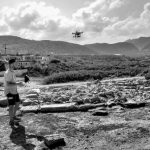 Aerial Photography - Aerial Photography – from kite to drone Since the beginning of the excavations in 2007, the Sissi project has given priority to aerial coverage to add to the Google Earth pictures that were then starting to be of a useful resolution (Fig. 1-2) Figure 1: Google earth images of the Kephali: from left to […]
Aerial Photography - Aerial Photography – from kite to drone Since the beginning of the excavations in 2007, the Sissi project has given priority to aerial coverage to add to the Google Earth pictures that were then starting to be of a useful resolution (Fig. 1-2) Figure 1: Google earth images of the Kephali: from left to […] Archaeometallurgy of gold - The meticulous excavations at Sissi have uncovered a total of 46 gold items that hold significant value for understanding the role of gold in Cretan Bronze Age society. The majority of the gold items come from two different pivotal moments in Sissi’s history that coincide with major changes in Cretan history. The first group originated […]
Archaeometallurgy of gold - The meticulous excavations at Sissi have uncovered a total of 46 gold items that hold significant value for understanding the role of gold in Cretan Bronze Age society. The majority of the gold items come from two different pivotal moments in Sissi’s history that coincide with major changes in Cretan history. The first group originated […] Archeobotany - Since the beginning of the excavations at Sissi in 2007 soil samples have been taken from all zones for the investigation of bioarchaeological remains, including seeds, charcoal, molluscs, fish and animal bones. The aim has been to recover with rigorous methods soil samples from all excavation contexts to allow investigation of the spatial distribution of […]
Archeobotany - Since the beginning of the excavations at Sissi in 2007 soil samples have been taken from all zones for the investigation of bioarchaeological remains, including seeds, charcoal, molluscs, fish and animal bones. The aim has been to recover with rigorous methods soil samples from all excavation contexts to allow investigation of the spatial distribution of […]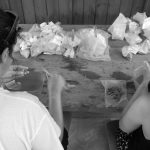 Archeomalacology - The systematic collection of remains of marine and land molluscs has been integral to the excavation on the Kephali hill at Sissi. The aim of the shell study is to allow insights into the life cycle of shells, from the procurement of molluscs, to preparation/working, consumption and final discard on the basis of detailed faunal, […]
Archeomalacology - The systematic collection of remains of marine and land molluscs has been integral to the excavation on the Kephali hill at Sissi. The aim of the shell study is to allow insights into the life cycle of shells, from the procurement of molluscs, to preparation/working, consumption and final discard on the basis of detailed faunal, […]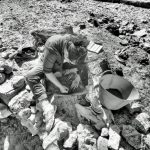 Archeothanatology - Since the very start of excavation of the cemetery area (Zone 1 & 9) at Sissi, two specialists in archeothanatology and bioanthropology, Isabelle Crevecoeur & Aurore Schmitt, were present, directing a larger team of anthropologists. Careful observations and recording of the human remains, as well as the associated artefacts, allowed us to restore precisely and […]
Archeothanatology - Since the very start of excavation of the cemetery area (Zone 1 & 9) at Sissi, two specialists in archeothanatology and bioanthropology, Isabelle Crevecoeur & Aurore Schmitt, were present, directing a larger team of anthropologists. Careful observations and recording of the human remains, as well as the associated artefacts, allowed us to restore precisely and […] Architectural Survey - The architectural survey of the Sissi Archaeological Project has been conducted over multiple years by different teams of architects employing a range of methodologies. Since 2022, the architectural documentation has been carried out by Dr Nikolia Kartalou, continuing and further developing the digital methodology established in earlier years by Eleftheria Zografou. Survey Phases The initial […]
Architectural Survey - The architectural survey of the Sissi Archaeological Project has been conducted over multiple years by different teams of architects employing a range of methodologies. Since 2022, the architectural documentation has been carried out by Dr Nikolia Kartalou, continuing and further developing the digital methodology established in earlier years by Eleftheria Zografou. Survey Phases The initial […] Ceramic Studies - Coordination; study of Neopalatial, Final Palatial and Postpalatial pottery: Charlotte Langohr Study of Prepalatial and Protopalatial pottery: Ilaria Caloi Study of cooking pottery and residue analysis: Jenny Tsafou Study of Neopalatial pottery: Iro Mathioudaki Study of Protopalatial pottery: Roxane Dubois Petrographic, mineralogical, and elemental analyses of Neopalatial, Final Palatial and Postpalatial pottery: Nikita Dauby The […]
Ceramic Studies - Coordination; study of Neopalatial, Final Palatial and Postpalatial pottery: Charlotte Langohr Study of Prepalatial and Protopalatial pottery: Ilaria Caloi Study of cooking pottery and residue analysis: Jenny Tsafou Study of Neopalatial pottery: Iro Mathioudaki Study of Protopalatial pottery: Roxane Dubois Petrographic, mineralogical, and elemental analyses of Neopalatial, Final Palatial and Postpalatial pottery: Nikita Dauby The […] DNA Analysis - Archaeogenetics The archaeogenetic component of the interdisciplinary project at Sissi focuses on the genetic analysis of human remains, carried out at the Max Planck Institute for Evolutionary Anthropology in Leipzig, Germany, under the leadership of Philipp Stockhammer and Alissa Mittnik. By selecting teeth and petrous bones for analysis – skeletal elements known for their superior […]
DNA Analysis - Archaeogenetics The archaeogenetic component of the interdisciplinary project at Sissi focuses on the genetic analysis of human remains, carried out at the Max Planck Institute for Evolutionary Anthropology in Leipzig, Germany, under the leadership of Philipp Stockhammer and Alissa Mittnik. By selecting teeth and petrous bones for analysis – skeletal elements known for their superior […]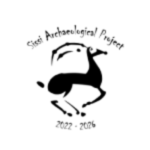 Fauna - Under construction by Valasia Isaakidou
Fauna - Under construction by Valasia Isaakidou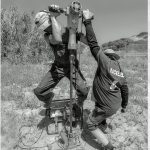 Geoarchaeology - Geoarchaeology and phytolith studies The 2016 excavation campaign at Sissi was complemented by a preliminary geomorphological survey undertaken in the valleys debouching to the east and west of the Kephali Hill. This survey was carried out by Dr. Simon Jusseret (University of Texas at Austin, USA, and UCLouvain) and Prof. Mark Macklin (Aberystwyth University, now […]
Geoarchaeology - Geoarchaeology and phytolith studies The 2016 excavation campaign at Sissi was complemented by a preliminary geomorphological survey undertaken in the valleys debouching to the east and west of the Kephali Hill. This survey was carried out by Dr. Simon Jusseret (University of Texas at Austin, USA, and UCLouvain) and Prof. Mark Macklin (Aberystwyth University, now […]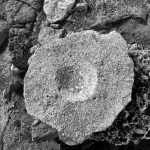 Ground Stone Studies - Ground stone artefacts and stone vases The systematic collection of material during excavations at Sissi has led to the recovery of a large assemblage that comprises finished stone artefacts, debitage and unworked nodules. Drawing upon the concepts of the chaîne opératoire and object biographies, the aim of the study of the ground stone assemblage is […]
Ground Stone Studies - Ground stone artefacts and stone vases The systematic collection of material during excavations at Sissi has led to the recovery of a large assemblage that comprises finished stone artefacts, debitage and unworked nodules. Drawing upon the concepts of the chaîne opératoire and object biographies, the aim of the study of the ground stone assemblage is […] Management and Conservation of archaeological material - Apothiki management and logistics Since 2016, the new ‘Apothiki’ (or storerooms) of the Sissi Project located at Agios Nikolaos, East Crete, is operational. All the archaeological finds of seven excavation campaigns at Sissi have been gathered, transferred and reorganised within this new space, which also comprises spacious working areas facilitating the work of researchers and […]
Management and Conservation of archaeological material - Apothiki management and logistics Since 2016, the new ‘Apothiki’ (or storerooms) of the Sissi Project located at Agios Nikolaos, East Crete, is operational. All the archaeological finds of seven excavation campaigns at Sissi have been gathered, transferred and reorganised within this new space, which also comprises spacious working areas facilitating the work of researchers and […]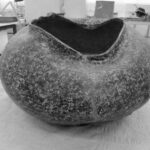 Metal - The first 10 campaigns at Sissi have yielded an assemblage of c. 70 metal objects, mainly copper-based and lead. They have been found throughout the settlement and their quantitative distribution according to excavation zone can be seen in figure 1. The state of preservation of this interesting collection ranges from the fragmentary and unidentifiable to […]
Metal - The first 10 campaigns at Sissi have yielded an assemblage of c. 70 metal objects, mainly copper-based and lead. They have been found throughout the settlement and their quantitative distribution according to excavation zone can be seen in figure 1. The state of preservation of this interesting collection ranges from the fragmentary and unidentifiable to […]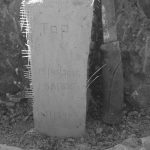 Micromorphology - As part of the interdisciplinary approach as practiced by the Sissi Archaeological Project, an extensive micromorphological study is carried out on site by Laura Matilde Magno. Complementary to archaeology, micromorphology is a special branch of pedology that involves the study and the interpretation of soils through the analysis of thin sections under the polarizing light microscope. […]
Micromorphology - As part of the interdisciplinary approach as practiced by the Sissi Archaeological Project, an extensive micromorphological study is carried out on site by Laura Matilde Magno. Complementary to archaeology, micromorphology is a special branch of pedology that involves the study and the interpretation of soils through the analysis of thin sections under the polarizing light microscope. […]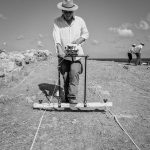 Non-destructive geophysical survey methods - The 2015 and 2016 excavation campaigns were each preceded by a geophysical survey led by Dr. Apostolos Sarris, director of the Laboratory of Geophysical- Satellite Remote Sensing & Archaeo-environment (Foundation for Research & Technology, Hellas). The approach adopted by the geophysical team favoured high resolution over wide coverage. Specific areas of limited extent were surveyed […]
Non-destructive geophysical survey methods - The 2015 and 2016 excavation campaigns were each preceded by a geophysical survey led by Dr. Apostolos Sarris, director of the Laboratory of Geophysical- Satellite Remote Sensing & Archaeo-environment (Foundation for Research & Technology, Hellas). The approach adopted by the geophysical team favoured high resolution over wide coverage. Specific areas of limited extent were surveyed […] Obsidian - Obsidian – which primarily and typically derives from the island of Milos (Cyclades) – was imported to Crete from a very early moment onwards and was transformed on the site of Sissi throughout the Bronze Age to produce razor sharp prismatic blades using the skilled pressure flaking technique. While the aims of the study of […]
Obsidian - Obsidian – which primarily and typically derives from the island of Milos (Cyclades) – was imported to Crete from a very early moment onwards and was transformed on the site of Sissi throughout the Bronze Age to produce razor sharp prismatic blades using the skilled pressure flaking technique. While the aims of the study of […]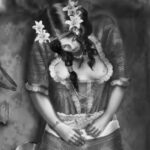 Reconstruction - Reconstructing the ‘Lady of Sissi’ The discovery of the burial of an individual within a shaft grave, accompanied by jewelry and pottery, in 2019 was exceptional enough to warrant a reconstruction. This was done by Céline Piret, an archaeologist, artist and director of the MiaBW (https://www.miabw.com/) in Hélécine in Belgium. Céline has a wide experience […]
Reconstruction - Reconstructing the ‘Lady of Sissi’ The discovery of the burial of an individual within a shaft grave, accompanied by jewelry and pottery, in 2019 was exceptional enough to warrant a reconstruction. This was done by Céline Piret, an archaeologist, artist and director of the MiaBW (https://www.miabw.com/) in Hélécine in Belgium. Céline has a wide experience […] Recording the Site - Recording the Site: Topography-Database-GIS Recording is everything in archaeology. If you don’t record something, the evidence is lost, The overall aim of the topographical survey of the Kephali is the investigation and mapping of visible archaeological, architectural and topographical features, an ongoing process. All the retrieved archaeological data are recorded on the field in a […]
Recording the Site - Recording the Site: Topography-Database-GIS Recording is everything in archaeology. If you don’t record something, the evidence is lost, The overall aim of the topographical survey of the Kephali is the investigation and mapping of visible archaeological, architectural and topographical features, an ongoing process. All the retrieved archaeological data are recorded on the field in a […] Seals and Sealings - More than 7,500 Minoan seals and ancient seal impressions are known today. This number is estimated to represent only 5% of the original output and attests to the significance of these objects in Minoan society. Seals served functions at multiple societal levels, starting from the personal one and reaching that of state administration. They were […]
Seals and Sealings - More than 7,500 Minoan seals and ancient seal impressions are known today. This number is estimated to represent only 5% of the original output and attests to the significance of these objects in Minoan society. Seals served functions at multiple societal levels, starting from the personal one and reaching that of state administration. They were […]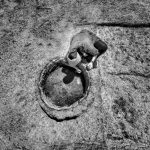 Site conservation - By its very nature, archaeology is destructive and irreversible. Site conservation, on the contrary, is concerned with preventing damage and slowing deterioration processes by using reversible methods. Despite this, at first glance, conflicting interest and objective, the preservation of the remains of the past has become an integral and mandatory part of the archaeological […]
Site conservation - By its very nature, archaeology is destructive and irreversible. Site conservation, on the contrary, is concerned with preventing damage and slowing deterioration processes by using reversible methods. Despite this, at first glance, conflicting interest and objective, the preservation of the remains of the past has become an integral and mandatory part of the archaeological […]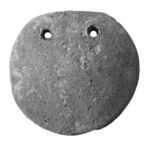 Textile implements - Textile archaeology In Minoan Crete, textiles and textile production were of great economic and cultural significance. A wide variety of textiles – such as clothing, maritime textiles (e.g., sails and ropes), household textiles (e.g., wall hangings, ceiling coverings, rugs, bedclothes, blankets), as well as bags, nets, accessories (e.g., belts, bands, scarves), threads and cords, and […]
Textile implements - Textile archaeology In Minoan Crete, textiles and textile production were of great economic and cultural significance. A wide variety of textiles – such as clothing, maritime textiles (e.g., sails and ropes), household textiles (e.g., wall hangings, ceiling coverings, rugs, bedclothes, blankets), as well as bags, nets, accessories (e.g., belts, bands, scarves), threads and cords, and […]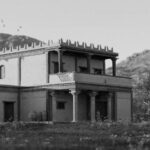 Virtual Reconstruction - The Sissi site is the subject of a reconstruction and visualization project that leverages cutting-edge techniques and employs Unreal Engine as a central platform. Just as detailed site surveys are fundamental to understanding the physical remains of past civilizations, Unreal Engine allows the project team to transform these findings into immersive and interactive digital experiences. […]
Virtual Reconstruction - The Sissi site is the subject of a reconstruction and visualization project that leverages cutting-edge techniques and employs Unreal Engine as a central platform. Just as detailed site surveys are fundamental to understanding the physical remains of past civilizations, Unreal Engine allows the project team to transform these findings into immersive and interactive digital experiences. […] Wood in Architecture - Wood is rarely preserved in archaeology, and the Cretan soil is particularly harsh, leaving few visible traces. However, a detailed analysis of other architectural remains—whether still in place or collapsed—makes it possible to reconstruct not only the presence of this material and the architectural functions for which it was used by the Minoans, but also […]
Wood in Architecture - Wood is rarely preserved in archaeology, and the Cretan soil is particularly harsh, leaving few visible traces. However, a detailed analysis of other architectural remains—whether still in place or collapsed—makes it possible to reconstruct not only the presence of this material and the architectural functions for which it was used by the Minoans, but also […]
 Aerial Photography - Aerial Photography – from kite to drone Since the beginning of the excavations in 2007, the Sissi project has given priority to aerial coverage to add to the Google Earth pictures that were then starting to be of a useful resolution (Fig. 1-2) Figure 1: Google earth images of the Kephali: from left to […]
Aerial Photography - Aerial Photography – from kite to drone Since the beginning of the excavations in 2007, the Sissi project has given priority to aerial coverage to add to the Google Earth pictures that were then starting to be of a useful resolution (Fig. 1-2) Figure 1: Google earth images of the Kephali: from left to […] Archaeometallurgy of gold - The meticulous excavations at Sissi have uncovered a total of 46 gold items that hold significant value for understanding the role of gold in Cretan Bronze Age society. The majority of the gold items come from two different pivotal moments in Sissi’s history that coincide with major changes in Cretan history. The first group originated […]
Archaeometallurgy of gold - The meticulous excavations at Sissi have uncovered a total of 46 gold items that hold significant value for understanding the role of gold in Cretan Bronze Age society. The majority of the gold items come from two different pivotal moments in Sissi’s history that coincide with major changes in Cretan history. The first group originated […] Archeobotany - Since the beginning of the excavations at Sissi in 2007 soil samples have been taken from all zones for the investigation of bioarchaeological remains, including seeds, charcoal, molluscs, fish and animal bones. The aim has been to recover with rigorous methods soil samples from all excavation contexts to allow investigation of the spatial distribution of […]
Archeobotany - Since the beginning of the excavations at Sissi in 2007 soil samples have been taken from all zones for the investigation of bioarchaeological remains, including seeds, charcoal, molluscs, fish and animal bones. The aim has been to recover with rigorous methods soil samples from all excavation contexts to allow investigation of the spatial distribution of […] Archeomalacology - The systematic collection of remains of marine and land molluscs has been integral to the excavation on the Kephali hill at Sissi. The aim of the shell study is to allow insights into the life cycle of shells, from the procurement of molluscs, to preparation/working, consumption and final discard on the basis of detailed faunal, […]
Archeomalacology - The systematic collection of remains of marine and land molluscs has been integral to the excavation on the Kephali hill at Sissi. The aim of the shell study is to allow insights into the life cycle of shells, from the procurement of molluscs, to preparation/working, consumption and final discard on the basis of detailed faunal, […] Archeothanatology - Since the very start of excavation of the cemetery area (Zone 1 & 9) at Sissi, two specialists in archeothanatology and bioanthropology, Isabelle Crevecoeur & Aurore Schmitt, were present, directing a larger team of anthropologists. Careful observations and recording of the human remains, as well as the associated artefacts, allowed us to restore precisely and […]
Archeothanatology - Since the very start of excavation of the cemetery area (Zone 1 & 9) at Sissi, two specialists in archeothanatology and bioanthropology, Isabelle Crevecoeur & Aurore Schmitt, were present, directing a larger team of anthropologists. Careful observations and recording of the human remains, as well as the associated artefacts, allowed us to restore precisely and […] Architectural Survey - The architectural survey of the Sissi Archaeological Project has been conducted over multiple years by different teams of architects employing a range of methodologies. Since 2022, the architectural documentation has been carried out by Dr Nikolia Kartalou, continuing and further developing the digital methodology established in earlier years by Eleftheria Zografou. Survey Phases The initial […]
Architectural Survey - The architectural survey of the Sissi Archaeological Project has been conducted over multiple years by different teams of architects employing a range of methodologies. Since 2022, the architectural documentation has been carried out by Dr Nikolia Kartalou, continuing and further developing the digital methodology established in earlier years by Eleftheria Zografou. Survey Phases The initial […] Ceramic Studies - Coordination; study of Neopalatial, Final Palatial and Postpalatial pottery: Charlotte Langohr Study of Prepalatial and Protopalatial pottery: Ilaria Caloi Study of cooking pottery and residue analysis: Jenny Tsafou Study of Neopalatial pottery: Iro Mathioudaki Study of Protopalatial pottery: Roxane Dubois Petrographic, mineralogical, and elemental analyses of Neopalatial, Final Palatial and Postpalatial pottery: Nikita Dauby The […]
Ceramic Studies - Coordination; study of Neopalatial, Final Palatial and Postpalatial pottery: Charlotte Langohr Study of Prepalatial and Protopalatial pottery: Ilaria Caloi Study of cooking pottery and residue analysis: Jenny Tsafou Study of Neopalatial pottery: Iro Mathioudaki Study of Protopalatial pottery: Roxane Dubois Petrographic, mineralogical, and elemental analyses of Neopalatial, Final Palatial and Postpalatial pottery: Nikita Dauby The […] DNA Analysis - Archaeogenetics The archaeogenetic component of the interdisciplinary project at Sissi focuses on the genetic analysis of human remains, carried out at the Max Planck Institute for Evolutionary Anthropology in Leipzig, Germany, under the leadership of Philipp Stockhammer and Alissa Mittnik. By selecting teeth and petrous bones for analysis – skeletal elements known for their superior […]
DNA Analysis - Archaeogenetics The archaeogenetic component of the interdisciplinary project at Sissi focuses on the genetic analysis of human remains, carried out at the Max Planck Institute for Evolutionary Anthropology in Leipzig, Germany, under the leadership of Philipp Stockhammer and Alissa Mittnik. By selecting teeth and petrous bones for analysis – skeletal elements known for their superior […] Geoarchaeology - Geoarchaeology and phytolith studies The 2016 excavation campaign at Sissi was complemented by a preliminary geomorphological survey undertaken in the valleys debouching to the east and west of the Kephali Hill. This survey was carried out by Dr. Simon Jusseret (University of Texas at Austin, USA, and UCLouvain) and Prof. Mark Macklin (Aberystwyth University, now […]
Geoarchaeology - Geoarchaeology and phytolith studies The 2016 excavation campaign at Sissi was complemented by a preliminary geomorphological survey undertaken in the valleys debouching to the east and west of the Kephali Hill. This survey was carried out by Dr. Simon Jusseret (University of Texas at Austin, USA, and UCLouvain) and Prof. Mark Macklin (Aberystwyth University, now […] Ground Stone Studies - Ground stone artefacts and stone vases The systematic collection of material during excavations at Sissi has led to the recovery of a large assemblage that comprises finished stone artefacts, debitage and unworked nodules. Drawing upon the concepts of the chaîne opératoire and object biographies, the aim of the study of the ground stone assemblage is […]
Ground Stone Studies - Ground stone artefacts and stone vases The systematic collection of material during excavations at Sissi has led to the recovery of a large assemblage that comprises finished stone artefacts, debitage and unworked nodules. Drawing upon the concepts of the chaîne opératoire and object biographies, the aim of the study of the ground stone assemblage is […] Management and Conservation of archaeological material - Apothiki management and logistics Since 2016, the new ‘Apothiki’ (or storerooms) of the Sissi Project located at Agios Nikolaos, East Crete, is operational. All the archaeological finds of seven excavation campaigns at Sissi have been gathered, transferred and reorganised within this new space, which also comprises spacious working areas facilitating the work of researchers and […]
Management and Conservation of archaeological material - Apothiki management and logistics Since 2016, the new ‘Apothiki’ (or storerooms) of the Sissi Project located at Agios Nikolaos, East Crete, is operational. All the archaeological finds of seven excavation campaigns at Sissi have been gathered, transferred and reorganised within this new space, which also comprises spacious working areas facilitating the work of researchers and […] Metal - The first 10 campaigns at Sissi have yielded an assemblage of c. 70 metal objects, mainly copper-based and lead. They have been found throughout the settlement and their quantitative distribution according to excavation zone can be seen in figure 1. The state of preservation of this interesting collection ranges from the fragmentary and unidentifiable to […]
Metal - The first 10 campaigns at Sissi have yielded an assemblage of c. 70 metal objects, mainly copper-based and lead. They have been found throughout the settlement and their quantitative distribution according to excavation zone can be seen in figure 1. The state of preservation of this interesting collection ranges from the fragmentary and unidentifiable to […] Micromorphology - As part of the interdisciplinary approach as practiced by the Sissi Archaeological Project, an extensive micromorphological study is carried out on site by Laura Matilde Magno. Complementary to archaeology, micromorphology is a special branch of pedology that involves the study and the interpretation of soils through the analysis of thin sections under the polarizing light microscope. […]
Micromorphology - As part of the interdisciplinary approach as practiced by the Sissi Archaeological Project, an extensive micromorphological study is carried out on site by Laura Matilde Magno. Complementary to archaeology, micromorphology is a special branch of pedology that involves the study and the interpretation of soils through the analysis of thin sections under the polarizing light microscope. […] Non-destructive geophysical survey methods - The 2015 and 2016 excavation campaigns were each preceded by a geophysical survey led by Dr. Apostolos Sarris, director of the Laboratory of Geophysical- Satellite Remote Sensing & Archaeo-environment (Foundation for Research & Technology, Hellas). The approach adopted by the geophysical team favoured high resolution over wide coverage. Specific areas of limited extent were surveyed […]
Non-destructive geophysical survey methods - The 2015 and 2016 excavation campaigns were each preceded by a geophysical survey led by Dr. Apostolos Sarris, director of the Laboratory of Geophysical- Satellite Remote Sensing & Archaeo-environment (Foundation for Research & Technology, Hellas). The approach adopted by the geophysical team favoured high resolution over wide coverage. Specific areas of limited extent were surveyed […] Obsidian - Obsidian – which primarily and typically derives from the island of Milos (Cyclades) – was imported to Crete from a very early moment onwards and was transformed on the site of Sissi throughout the Bronze Age to produce razor sharp prismatic blades using the skilled pressure flaking technique. While the aims of the study of […]
Obsidian - Obsidian – which primarily and typically derives from the island of Milos (Cyclades) – was imported to Crete from a very early moment onwards and was transformed on the site of Sissi throughout the Bronze Age to produce razor sharp prismatic blades using the skilled pressure flaking technique. While the aims of the study of […] Reconstruction - Reconstructing the ‘Lady of Sissi’ The discovery of the burial of an individual within a shaft grave, accompanied by jewelry and pottery, in 2019 was exceptional enough to warrant a reconstruction. This was done by Céline Piret, an archaeologist, artist and director of the MiaBW (https://www.miabw.com/) in Hélécine in Belgium. Céline has a wide experience […]
Reconstruction - Reconstructing the ‘Lady of Sissi’ The discovery of the burial of an individual within a shaft grave, accompanied by jewelry and pottery, in 2019 was exceptional enough to warrant a reconstruction. This was done by Céline Piret, an archaeologist, artist and director of the MiaBW (https://www.miabw.com/) in Hélécine in Belgium. Céline has a wide experience […] Recording the Site - Recording the Site: Topography-Database-GIS Recording is everything in archaeology. If you don’t record something, the evidence is lost, The overall aim of the topographical survey of the Kephali is the investigation and mapping of visible archaeological, architectural and topographical features, an ongoing process. All the retrieved archaeological data are recorded on the field in a […]
Recording the Site - Recording the Site: Topography-Database-GIS Recording is everything in archaeology. If you don’t record something, the evidence is lost, The overall aim of the topographical survey of the Kephali is the investigation and mapping of visible archaeological, architectural and topographical features, an ongoing process. All the retrieved archaeological data are recorded on the field in a […] Seals and Sealings - More than 7,500 Minoan seals and ancient seal impressions are known today. This number is estimated to represent only 5% of the original output and attests to the significance of these objects in Minoan society. Seals served functions at multiple societal levels, starting from the personal one and reaching that of state administration. They were […]
Seals and Sealings - More than 7,500 Minoan seals and ancient seal impressions are known today. This number is estimated to represent only 5% of the original output and attests to the significance of these objects in Minoan society. Seals served functions at multiple societal levels, starting from the personal one and reaching that of state administration. They were […] Site conservation - By its very nature, archaeology is destructive and irreversible. Site conservation, on the contrary, is concerned with preventing damage and slowing deterioration processes by using reversible methods. Despite this, at first glance, conflicting interest and objective, the preservation of the remains of the past has become an integral and mandatory part of the archaeological […]
Site conservation - By its very nature, archaeology is destructive and irreversible. Site conservation, on the contrary, is concerned with preventing damage and slowing deterioration processes by using reversible methods. Despite this, at first glance, conflicting interest and objective, the preservation of the remains of the past has become an integral and mandatory part of the archaeological […] Textile implements - Textile archaeology In Minoan Crete, textiles and textile production were of great economic and cultural significance. A wide variety of textiles – such as clothing, maritime textiles (e.g., sails and ropes), household textiles (e.g., wall hangings, ceiling coverings, rugs, bedclothes, blankets), as well as bags, nets, accessories (e.g., belts, bands, scarves), threads and cords, and […]
Textile implements - Textile archaeology In Minoan Crete, textiles and textile production were of great economic and cultural significance. A wide variety of textiles – such as clothing, maritime textiles (e.g., sails and ropes), household textiles (e.g., wall hangings, ceiling coverings, rugs, bedclothes, blankets), as well as bags, nets, accessories (e.g., belts, bands, scarves), threads and cords, and […] Virtual Reconstruction - The Sissi site is the subject of a reconstruction and visualization project that leverages cutting-edge techniques and employs Unreal Engine as a central platform. Just as detailed site surveys are fundamental to understanding the physical remains of past civilizations, Unreal Engine allows the project team to transform these findings into immersive and interactive digital experiences. […]
Virtual Reconstruction - The Sissi site is the subject of a reconstruction and visualization project that leverages cutting-edge techniques and employs Unreal Engine as a central platform. Just as detailed site surveys are fundamental to understanding the physical remains of past civilizations, Unreal Engine allows the project team to transform these findings into immersive and interactive digital experiences. […] Wood in Architecture - Wood is rarely preserved in archaeology, and the Cretan soil is particularly harsh, leaving few visible traces. However, a detailed analysis of other architectural remains—whether still in place or collapsed—makes it possible to reconstruct not only the presence of this material and the architectural functions for which it was used by the Minoans, but also […]
Wood in Architecture - Wood is rarely preserved in archaeology, and the Cretan soil is particularly harsh, leaving few visible traces. However, a detailed analysis of other architectural remains—whether still in place or collapsed—makes it possible to reconstruct not only the presence of this material and the architectural functions for which it was used by the Minoans, but also […]